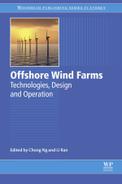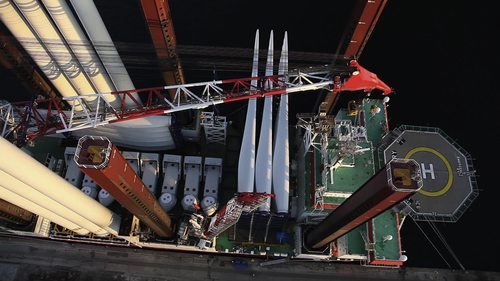Assembly, transportation, installation and commissioning of offshore wind farms
Abstract
In this chapter, installation of offshore wind farms is discussed briefly. The installation of offshore wind farms is discussed in four categories corresponding to four main wind farm elements, which are foundations, turbines, substations and cables. For the installation of each category, specialised equipment, vessels and installation methods are necessary. Furthermore, preinstallation activities, such as onshore assembly and offshore transportation, and post-installation activities, such as tests and commissioning are discussed. Precommissioning tests are mandatory to demonstrate proper functionality of turbines and the wind farm as a whole. If all tests are successful, the wind farm can be commissioned and be connected to a grid. In the last section of this chapter, a conclusion is given and innovative offshore installation solutions are described.
Keywords
Array cable installation; Export cable installation; Foundation installation; Offshore transportation; Offshore wind farm commissioning; Onshore assembly; Substation installation; Wind turbine installation17.1. Introduction
17.2. Delivery of components
17.3. Onshore assembly
17.4. Offshore transport
17.5. Offshore installation
17.5.1. Foundation installation
17.5.1.1. Monopiles
17.5.1.2. Jackets and tripods
17.5.1.3. Gravity-based foundation
17.5.2. Turbine installation
17.5.3. Substation installation
17.5.4. Cable installation
17.5.4.1. Array cable installation
17.5.4.2. Export cable installation
17.6. Tests and commissioning
17.6.1. Factory acceptance tests
17.6.2. Site acceptance tests
17.6.3. Commissioning tests
17.6.4. Completion tests
17.6.5. Performance tests
17.7. Conclusions and future trends
17.7.1. Optimal installation planning
17.7.2. Offshore harbour
17.7.3. Breakwaters










